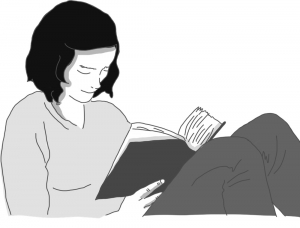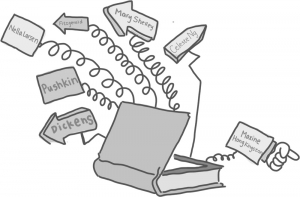
Ernest Hemingway, Charlotte Brontë, Charles Dickens. What do these classic authors have in common? AP Literature students don’t read their genius works. Unfortunately, many English teachers at Palo Alto High School have elected to focus on modern, more progressive authors in lieu of classic luminaries. I fear students aren’t learning about the roots of literature because teachers deprive them of studying undeniably valuable texts when they trade them for contemporary authors.
Novels considered classic literature, such as those by renowned authors like Dickens and Steinbeck, are beautifully written and flawlessly stand the test of time — which is why they are studied so heavily. This is more than I can say about most of the progressive texts students read in AP Literature, which may be relevant in theme and history but do not necessarily carry the same literary weight.
While I commend teachers for trying to diversify reading lists by adding female authors or writers of color, this shouldn’t be at the expense of the curriculum itself. In fact, there is diversity in classic literature that teachers can use. Jane Austen’s “Pride and Prejudice” or Charlotte Bronte’s “Jane Eyre,” for instance, are written by women and feature female protagonists, and novels like Miguel de Cervantes’ “Don Quixote” are written by non-Anglo-Saxon authors.
Understanding classic literature is especially important because many of these works are referenced in more progressive texts. For example, how are students expected to identify Kate Chopin’s Shakespearean references in “The Awakening” if never exposed to “Hamlet”?
In college, students will be expected to know classic authors. Only with prior experience analyzing these texts can students succeed when they are required to write difficult theses about classic novels beyond high school.
In the STEM-focused Silicon Valley, literary skills are already being taught ineffectively. Moving away from classical literature is a step back for students who should be well-versed in the humanities, even if that means understanding Melville’s convoluted white whale metaphor and decoding Shakespeare’s confusing verses.

Perhaps the best time travelers are Palo Alto High School’s AP Literature teachers, who manage to fit 395 years — of American and British literature, that is — into less than eight months. This breadth is commendable, and all English teachers at Paly should strive toward diversifying the texts they assign — both in chronology and in authors’ racial and gender identities — by incorporating more contemporary works to remain relevant to students.
This isn’t to say we shouldn’t read classical literature, which has largely shaped how we think, speak and write today. Born into a Russian-speaking family, I grew up reading and idolizing Pushkin, Tolstoy and other classical Russian authors who lived in the tattered, finely printed books that lined my mom’s shelves.
It’s precisely because of this that I believe literature classes should push students to read books that perhaps can’t be found on their parents’ bookshelves — to think about non-traditional texts they may never otherwise read. Almost everyone knows the story of “Jane Eyre,” for instance, but neither I nor many of my classmates had heard of Nella Larsen’s “Passing” — a novelistic tour de force examining biracial identity that was reintroduced into the Paly AP Literature curriculum this year — before reading it in class.
It’s through broadening the scope of our reading habits that we bring in fresh perspectives, learn about our complex human history and develop empathy. At the same time, we read selfishly. We want a novel to reflect us completely in its pages, to tear down the roofs of our souls and make us peer intently inside.
And let’s face it: Most works that we consider canonical American and British literature are written by white men about white men and shy away from once-taboo topics like sexuality and race that are highly relevant today. While the themes of classics are everlasting, their ability to represent a diverse class of English students is limited. Modern novels are often inherently more relatable to us — in their themes, characters, diction and even pace — and thus provide a more accessible, seamless reading experience.
After all, as Oscar Wilde once wrote, “it is the spectator, and not life, that art really mirrors.” As writers and audiences alike diversify, so should our literature curriculum.



